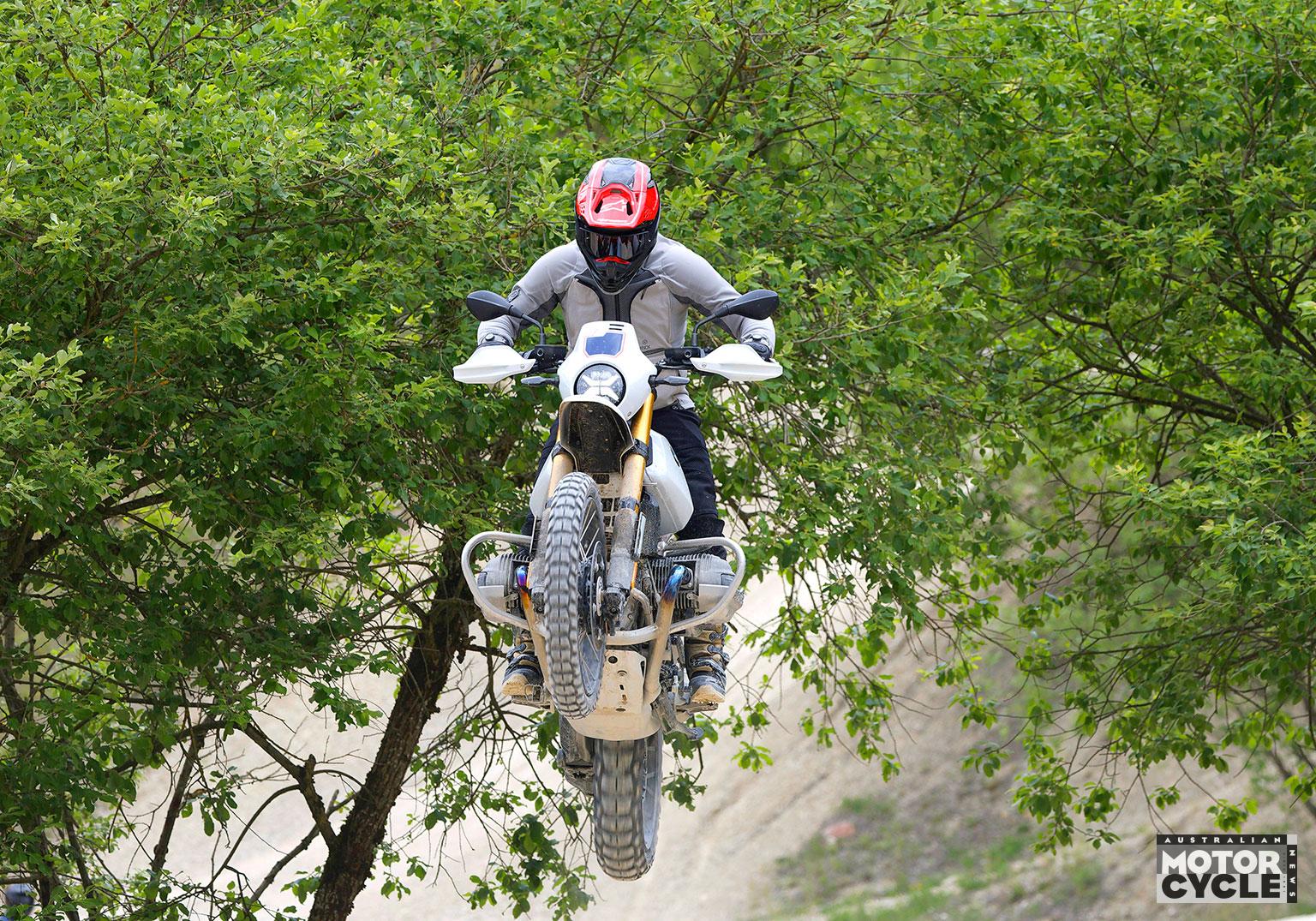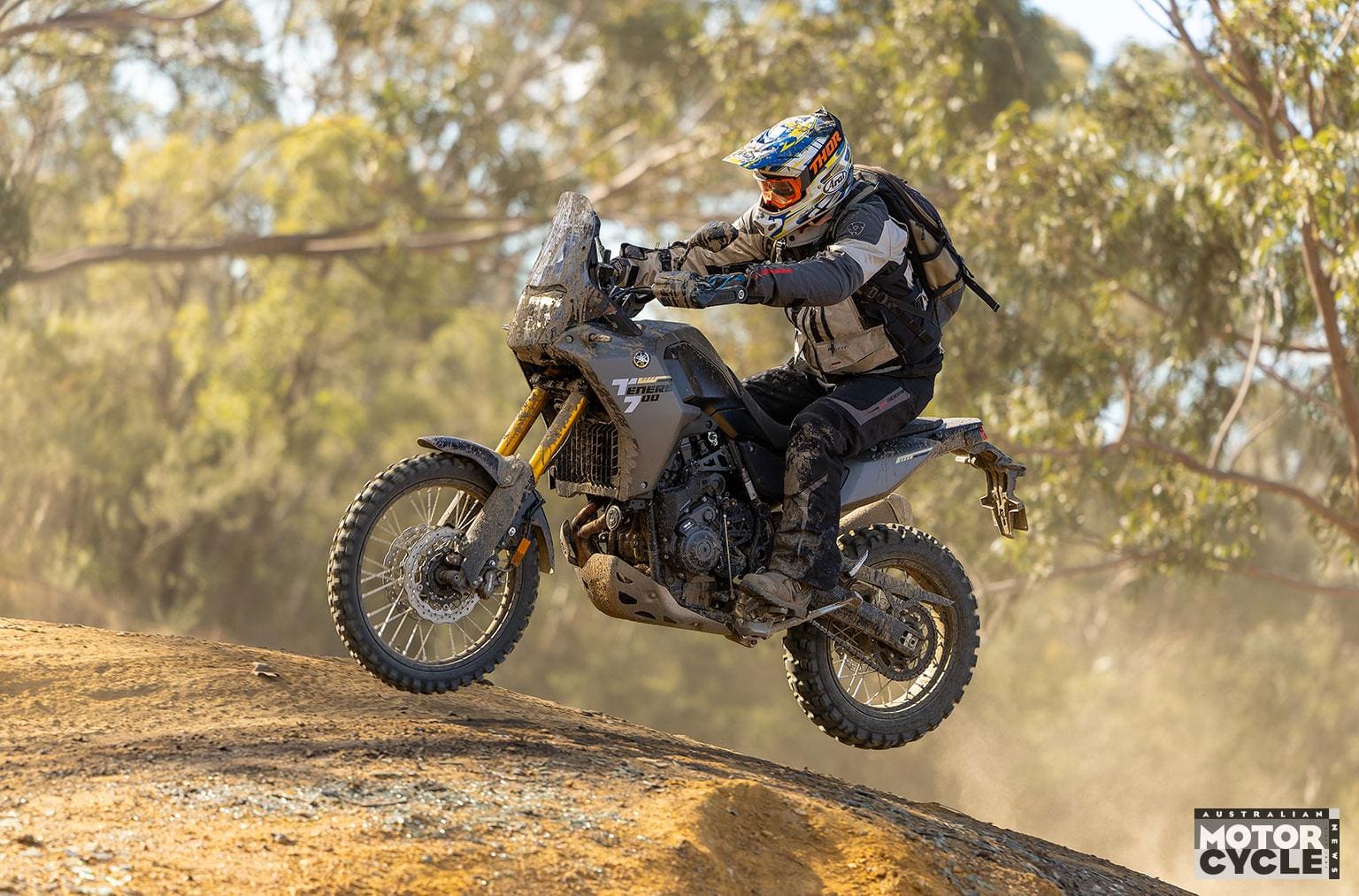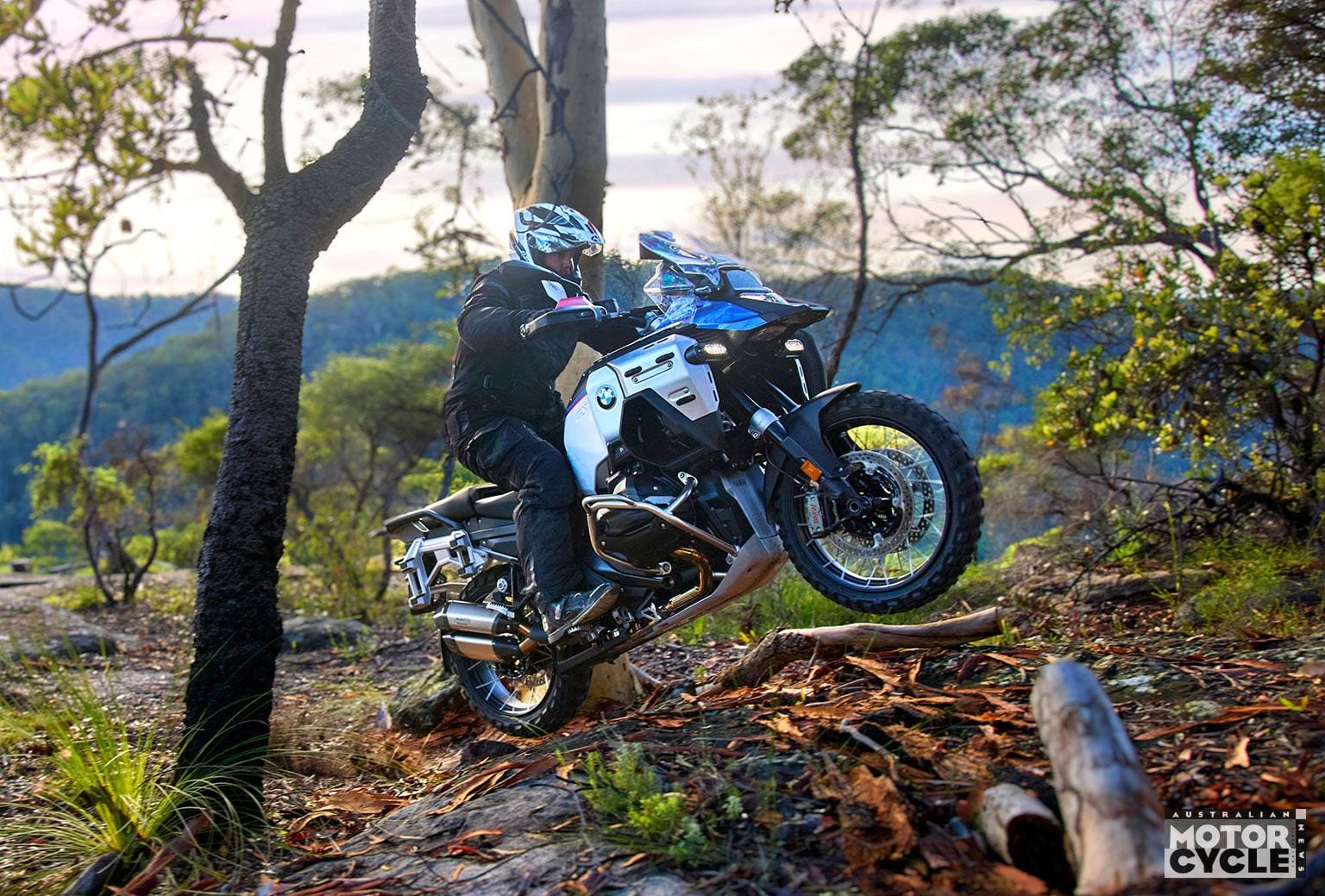Time to check in on the global whereabouts of adventure duo Mad or Nomad. A clue? They were last spotted in Central America…
We crossed the border into Belize in the hot afternoon sun and cut across silent and empty farmlands for hours. We thought the country had been deserted until we reached a rickety wooden ferry manned by a smiling boatman who hand-cranked it across the river for us.
We ploughed on, revving hard through snow in 40°C heat. Or at least that’s what the Belizeans call this deep fine white dust caking the back tracks. Every passing truck sent sky-high waves of the floury powder into our visors, where it found a way to creep through and stick to our faces.
Caked in a paste of dust and sweat with sand in our mouths, we finally arrived at Maria and Lucas’s home in a little fishing village called Chunox. They have turned their front garden into a campsite for overland travellers, so we pitched up surrounded by palm trees, puppies and curious kids and spent the next few days sipping on coconut water to soothe our desert-dry tongues.

Island escape
For the past few months, we had managed to ride almost one step ahead of the heat through Mexico, but now it was late in the riding season and we had entered Belize at the height of summer. There were only so many sweaty nights in a tent we could take, so we made a dash for the Caribbean Sea, left our bikes on the mainland and caught a boat to Caye Caulker to dive, snorkel with sharks and fall into island life with sand between our toes – instead of it choking our throats.
But a week of pina coladas later and the bikes were calling from across the water, whispering through the palm trees that things were heating up. Maybe it was the coladas talking, but we knew it was time to go.
Enter the underworld
There was one thing we couldn’t miss before leaving Belize – the Actun Tunichil Muknal Cave. We clambered into the deep cavern and waded through cold water into the darkness. Ancient Mayans believed this was the underworld. When a drought started, they ventured deeper inside, becoming more desperate until they started offering royalty as human sacrifices. Children’s skeletons are still here splayed out and calcified to the ground…

Ancient Guatemala
Hooked on temples and old civilizations, we crossed the border to Guatemala and pointed our wheels towards its northern rainforest. Hidden away beneath the trees lies Tikal – an ancient Mayan city dating back to 1000BC. It was the largest and most important city-state in the Maya region, until it was mysteriously abandoned and nobody knows why.
We arrived early before the sun came up and strolled alone through the huge park. A cool breeze swayed the trees while howler monkeys jumped between branches over our heads. We climbed up gigantic slabs of stone to look out over the forest and spot pyramid peaks poking through the canopies. There are over 3000 structures here, but only five percent of it has been uncovered. The sheer scale and ingenuity is indescribable. Atop our high temple, we could see the orange sun rising and needed to make a quick escape.

Northern heat
The north of Guatemala was baking us. Traffic jams through markets crammed with pigs, chickens and stalls of colourful peppers sent our bike fans whirring and the red-hot exhausts roasted our legs.
The higher the sun rose into the sky the more unbearable it got, so we plotted a route south. Our ride hugged the mountains so we could keep as cool as possible. The gravel tracks took us through rural villages where women stood by bridges in groups after washing themselves and their clothes in the water below. They combed their long black hair before tying it up and walking home carrying huge pots of water on their heads. Their colourful dresses and smiles beamed in the afternoon sun.

Rain at last
We turned right into the western mountains towards Lake Atitlan – a volcanic lake in the Highlands. But as soon as we closed in, the heavens opened and biblical floods crashed down throughout the mountain range. The roads leading to San Pedro, Atitlan, are dangerously steep with sharp hairpins. And the onslaught of rain covered them with rocks, branches and gushing muddy rivers. Our brakes burnt red as the hammering rain pinged and sizzled on our discs and we rolled around every submerged blind bend with our hearts in our throats.
The clouds parted over the next few days just long enough so we could ride the cobbled roads, walk through the colourful towns, watch the sun dip into the lake and eat silly amounts of local chocolate. We couldn’t stay too long though as we had to make a run for it before the rains returned.

Mountain sanctuary
We searched for sanctuary in the pretty colonial town of Antigua to escape the heat of the north and the rain of the west. At 1600m above sea level, we hoped we’d finally be able to cool off. We just wanted a few days where our boots wouldn’t be filled with either puddles of sweat or rain after a ride.
We loved Antigua so much we stayed put. Colourful buildings, friendly people, coffee shops, a constantly erupting nearby volcano and excellent language schools made it a good base. Three weeks of Spanish school later and now armed with “yes”, “please” and “is it spicy?” we were finally ready to tackle the rest of Central and South America.

Salvation in San Salvador
Little El Salvador’s most famous road is the Ruta de las Flores. It connects gorgeous colonial towns nestled in its western highlands. The road is beautifully sealed and gave our Honda CRFs a break from the constant dirt battles of Guatemala and Belize. The sun kindly warmed the tarmac so our tyres stuck to the blacktop as we rolled around curves lined with wildflowers with deep green valleys below. We plotted routes connecting the country’s volcanoes, but something went wrong with Alissa’s bike. It struggled and cut out intermittently on hills, so we headed to the capital, San Salvador, for repairs.
A mad dash around the city searching for parts in a thunderstorm ensued. The rain was so bad, local riders pulled over to huddle under shelters. We sat on the CRFs at permanently red traffic lights in shorts and T-shirts as buckets of rain were chucked into our faces. The riders waved us under the cover… “No hay problema! Mi piel es resistente al agua!” They nodded, confused. Spanish school was paying off. We repaired the bikes as best we could and left El Salvador in a hurry as we were now weeks behind our rough schedule and falling deeper into the rainy season.

Milestone in Honduras
Riding into Honduras was special as it marked the 40th country on our round-the-world motorcycle trip. And the 88th country we’ve travelled to so far. It’s bursting with green hills and fun roads, but because of our delays we had to push through.
But before reaching the Nicaraguan border, we needed to make a quick stop at DHL to post our drone (that we’ve never used) first. Drones are illegal in Nicaragua, so we’d have to fly it over the country and collect it in Costa Rica.
No TIP for you!
Crossing the border into Nicaragua was as painful as we expected it to be. It’s the luck of the draw sometimes with borders and we’ve had much worse, but this one’s right up there. The police checked our bikes for drones and, happy with our DHL receipt, they stamped a piece of paper saying we didn’t have one. So we got into the queue for our Temporary Import Permits.

However, the TIP lady wasn’t happy with the police report and demanded we exited the queue we’d just been waiting in for three hours. We refused and Alissa held fast while I desperately searched for the police officer who had abandoned her post. Her colleague sucked her teeth when I tried to explain the situation and ignored me. Twenty minutes later I found the officer and ushered her to the TIP lady who had now lost her cool. A shouting match kicked off, the police officer won and we were begrudgingly awarded our TIPs.
The day had passed us by, a gale force wind was blowing over palm trees outside the customs office, the rain was fierce, it was getting dark and we had a two-hour ride ahead of us. It was a great introduction to Nicaragua.
But we didn’t mind; instead we took time out in the beautiful cities of Leon and Granada to sip coffees, join walking tours and slide down active volcanoes on wooden boards.

Island of the gods
We made our way to Ometepe Island – the jewel of Nicaragua. The island was formed by two volcanoes rising out of Lake Nicaragua and was first inhabited over 4000 years ago when the indigenous people believed their gods lived there.
A light blue sky kept us company while we waited for the boat. But 10 minutes into the crossing it had moved on – replaced by lashing rain and rocking waves. The staff battened down the hatches as the twine string holding our bikes in place slowly unravelled.
The ferry crossing was rough so we rode straight to our little jungle lodge and waited… waited to be ambushed by a torrential tropical rainstorm or baked by the burning sun. But it never came. We reluctantly rode to the beach where free horses ran across the sand, the breeze tickled our T-shirts and a local offered us ice-creams with a smile.
We’d made it! We had finally outrun the weather and the chase was over. We flicked the bikes into life and blasted around Ometepe’s backroads, covering the circumference of the island, circling both volcanoes and only stopping to climb up waterfalls and drink icy lemon shakes on the beach.
Tune in next time as our round-the-world adventure takes us farther south to Costa Rica!

Riding there
If you’re taking your own motorcycle through Central America, you’ll want to ship your bike to or start in the USA or Canada. You’ll then need to pass through immigration and customs at each border crossing and obtain a visa, Temporary Import Permit and insurance if required.
Renting
The easiest option is to fly in and rent a motorcycle instead. We recommend Belize, Guatemala or Nicaragua for rentals – dependent on what you want to see and do.

Visas
For the above three countries, Australians do not need a visa if visiting for less than 30 days. If you want to visit more than one of these countries, we suggest renting a bike in one country, returning it and then travelling to your next country and renting another bike there.
Safety
There are some regions and routes you might need to be careful of in Central America and you will need to do your research if venturing off the beaten path. But as long as you’re sensible, follow guidelines and use your common sense, you’ll find they’re all wonderful countries to visit.

WHO ARE ANDY AND ALISSA?
Andy and Alissa packed up, sold everything and left the UK on January 1, 2018, to motorcycle around the world… and they are still going. You can follow their adventures on madornomad.com.












